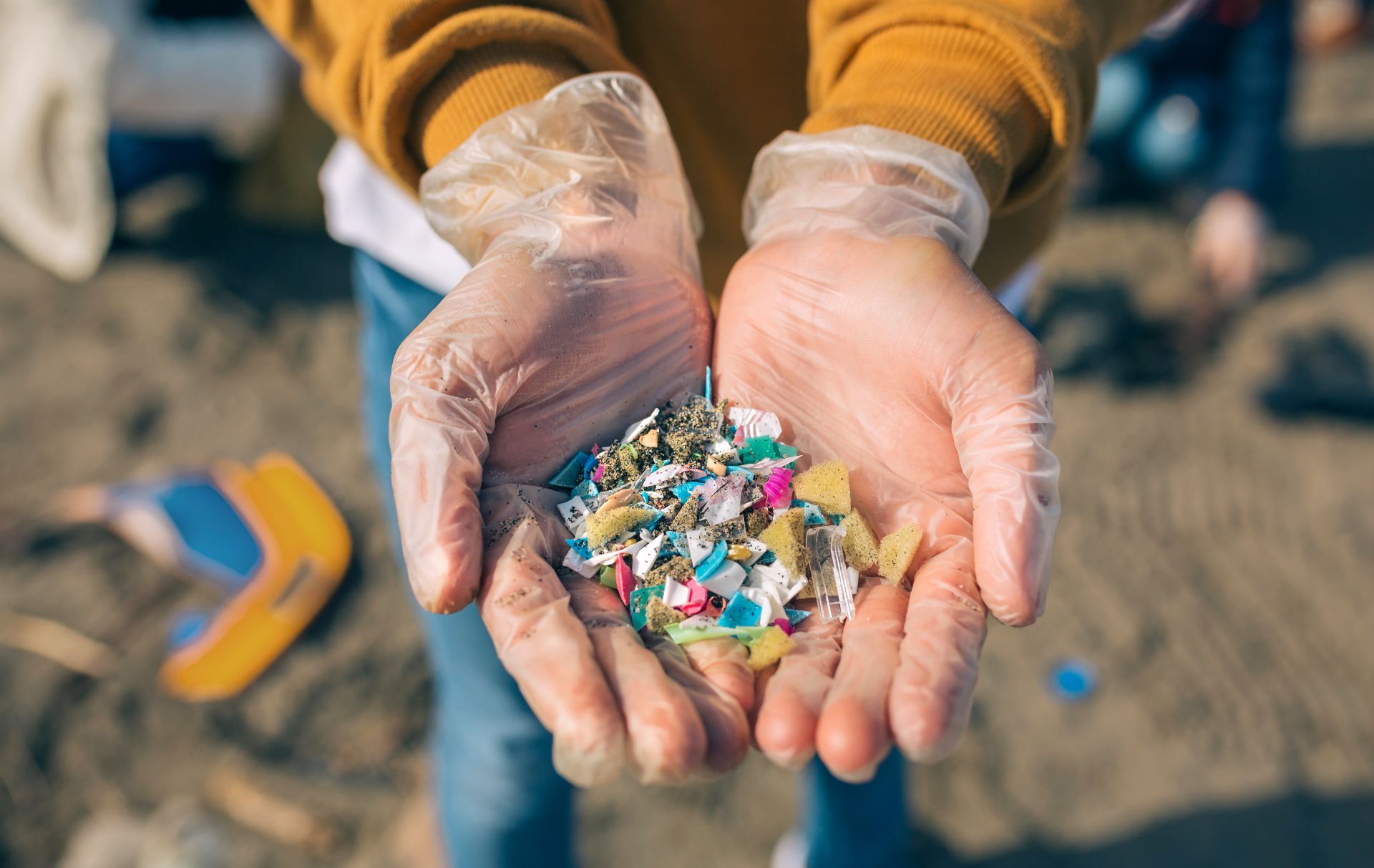Written by Henry Lin and Edited by Kevin Liu

“Out of sight, out of mind” is a common saying for when a problem is no longer consistently visible; however, that is not necessarily the best way to go about global problems, especially with plastic pollution. Currently, heaps of plastic trash are piling up all around the globe and negatively impacting the environment and the organisms living within them. Even remote locations on this planet are not free from this reign of plastic pollution, with large swaths of the Pacific Ocean being dubbed the “Great Pacific Garbage Patch” due to the buildup of plastic trash [1]. However, while the negative effects of plastic trash are regularly visible through photos and videos capturing animals trapped in plastic and in distress, the more substantial effects of plastic pollution comes from something less visible: microplastics [2].
Microplastics are mainly distinguished from regular plastics by their size (1-5mm long) and originate from a variety of sources including: manufacturing processes, the degradation of existing plastic into smaller pieces, and production of various health/beauty products [3]. Given their small size, microplastics can easily disperse through air and water, allowing them to travel long distances, contaminating whatever water sources and environments that they encounter. The prevalence of microplastics around the world is so great that scientists even considered its presence as a determining factor for a new geological period: the Anthropocene Epoch [4].
The negative effects brought on by microplastics can be both physical and chemical. Physical effects usually result from the ingestion of microplastics, and the severity of such effects often depends on the amount and size of plastics ingested [4]. Chemical effects of microplastics are derived from the chemicals used to coat plastics during the manufacturing process. Some of these chemicals (Bisphenol A, commonly known as BPA, phthalates, and certain flame retardants) are known to increase the risk of cancer along with causing developmental and reproductive issues by disrupting the release of hormones in the body [4]. Microplastics have also been observed to pick up other chemical characteristics through the absorption of toxic chemicals such as cadmium and mercury from the environment [5]. This underlies the issue of bioaccumulation as the microplastics absorbed by algae and plants can travel up the food chain, leading to greater and greater accumulation in organisms higher up in the chain, which may eventually reach humans [5].
Microplastics can enter into the human body through inhalation or ingestion (eating and drinking) and cause a variety of harmful responses [6]. Studies that analyzed the effect microplastics have on human cells reveal that they are able to damage cellular DNA as well as increase oxidative stress [6]. Oxidative stress is an imbalance of free radicals and antioxidants in the body, which can damage various organs and increase one’s overall risk of diabetes, heart disease, Alzheimer’s, and cancer [7]. Inhalation of microplastics have also been observed to cause asthma-like symptoms and immune responses leading to lung inflammation, and it is believed that these airborne plastics may also provide microorganisms a way into the lungs, leading to infection [4].Current understanding of the effects that microplastics have on human health is limited since nearly all data comes from studies involving human cells [5]. More research needs to be done on the effects that microplastics have on metabolic pathways within the human body as well as possible long term effects that the plastics have on various organs. Even though the problem of microplastics is not as visible compared to other issues, that should not diminish its effects on public health or priority in research.
References:
- “Great Pacific Garbage Patch.” (2019). National Geographic, National Geographic Society. Accessed 21 Apr. 2021.
- Daly, Natasha. “For Animals, Plastic is Turning the Ocean Into a Minefield.”(2018). National Geographic, National Geographic Partners, LLC. Accessed 21 Apr. 2021.
- “What are Microplastics?” (2021). National Ocean Service, National Oceanic and Atmospheric Administration. Accessed 10 Apr. 2021.
- Campanale, C., Massaelli, C., Savino, I., Locaputo, V., and Uricchio, V.F. (2020). “A Detailed Review Study on Potential Effects of Microplastics and Additives of Concern on Human Health.” International Journal of Environmental Research and Public Health, 17:1212.
- Qian Ying Yong, C., Valiyaveetill, S., Tang, B.L. (2020). “Toxicity of Microplastics and Nanoplastics in Mammalian Systems.” International Journal of Environmental Research and Public Health, 17:1509.
- Vethaak, A.D., and Legler, J. (2021). “Microplastics and Human Health.” American Association for the Advancement of Science, 371:672-674.
- “Everything You Should Know About Oxidative Stress.” Healthline, Healthline Media. Accessed 10 Apr. 2021.
